The Complete
Dome Builder’s Guide
A free step by step guide to finding the right dome for you.
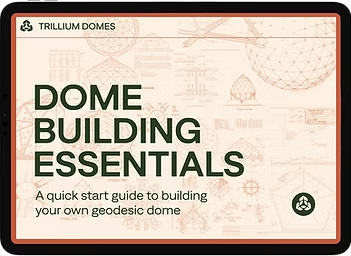
DON'T KNOW WHERE TO BEGIN?
Check out our free Dome Builder’s Guide
We’ve assembled a free guide to walk you through everything you need to know to build your own geodesic dome.
Why Build a Geodesic Structure?
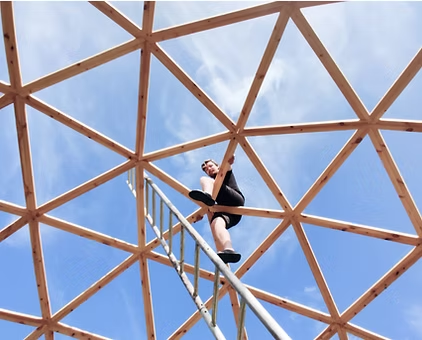
Beauty Based in Nature
Geodesic domes blend art and practicality, drawing inspiration from nature’s geometries to create captivating, aesthetically pleasing spaces that resonate deeply with people.
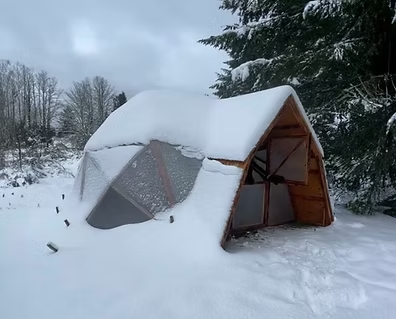
Inherently Resilient
Geodesic domes disperse natural tension and compression, creating a resilient structure capable of withstanding extreme weather with minimal resistance.

Material Efficiency
Geodesic domes require up to 50% less material than traditional box-shaped structures, making them some of the lightest and most efficient designs.
Picking a Dome or Zome design

Dome
Geodesic domes are the quintessential class of structures popularized by Buckminster Fuller.
- Tried and true design
- Very few unique faces
- Single bevel angle
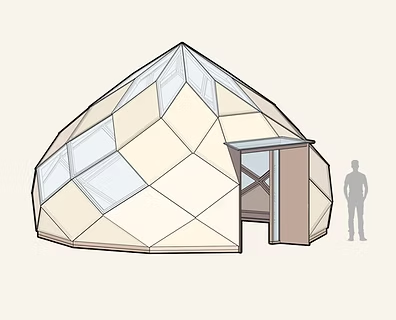
Zome
Zomes are a more modern take on the classic dome and have some significant advantages.
- Non-beveled method makes construction much easier, no jigs or compound cuts
- Sheds snow better than a classic dome
- Panel arrangement allows for much more efficient roofing / sealing

Hybrid
Our hybrid designs offer a completely unique and customizable structure.
- Non-beveled method makes construction much easier, no jigs or compound cuts
- Customizable design components allow for much more versatility and arrangement than a classic dome space
How do you want to use your dome?

Greenhouse

Sauna
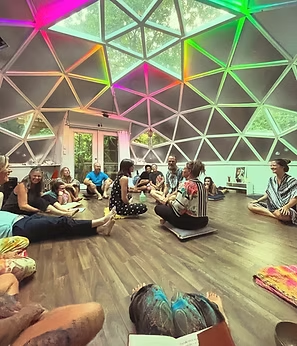
Community Space
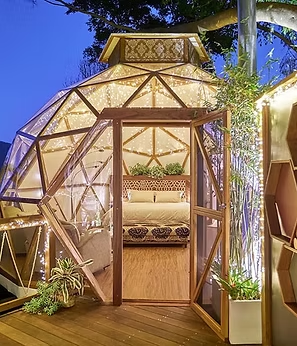
Short Term Rental

Yoga Studio

Cabin
Whats your budget/ build style?

Build from Plans
We have created plans that bring together the easiest and most efficient designs and methods that are used by DIYers and professional builders from all over the world! There are dozens of successful Trillium Domes projects by folks from all walks of life. This method requires some basic tools, but no prior woodworking skill. Just follow our step by step guides and videos. We are always here, should you have a question! By building with our plans, you can save a ton of money and create an absolutely stunning space with your own hands!
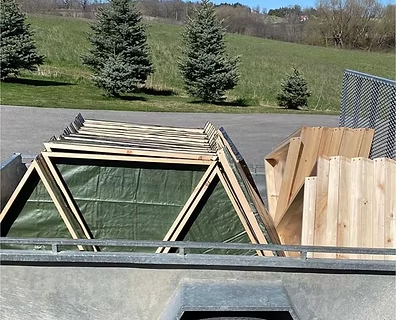
Build from a Kit - (Coming Soon)
A Trillium Kit will give you all the necessary components to assemble one of our designs without needing to fiddle with the woodworking bits! This is an ideal solution for those who feel they don’t have the time to take on the full scope of a Trillium Domes project. Most of the assembly will consist of screwing struts together and covering the dome. This saves a lot of costs associated with a full on site build. There are lots of options depending on your overall goals for the space!
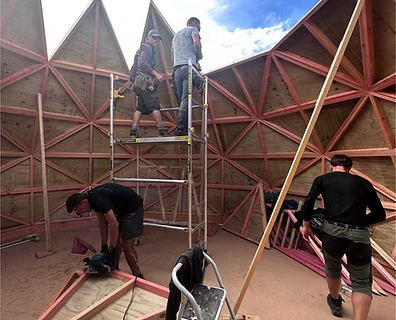
Commission a Build
Many people simply don’t have the time or resources to spend on building or assembling their own Trillium Domes space. In that case, you can request a quote for a commissioned build on your site, to your specifications. If Trillium Domes doesn’t have the capacity, we can help you find someone! The Trillium Domes Builders Collective is a growing association of vetted independent contractors with prior dome building experience who are familiar with our system of building.
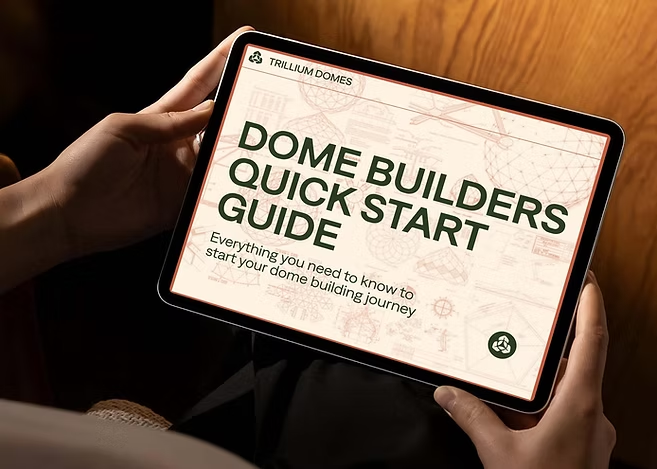
Want more detailed info around where
to begin?
Download our free dome building guide today
Still Have Questions?
First check out our FAQ to see if the answer to your question is already there. If not, feel free to contact us and we’ll be happy to help point you in the right direction
How much will it cost to build a Trillium Dome or Zome?
This is a very common question that comes up early in the planning process! Below is a quick reference but you can find a more in depth look at how much it costs to build a dome or a zome HERE.
There are several key factors that will affect the cost of your dome.
Size of Dome
Site Location
Materials Sourcing
Foundation
Intended use
Types of finish
Cost per Square Foot for a Trillium Dome or Zome
In general, construction costs are averaged into price per square foot. For example, in the USA, the average cost per sq ft for a residential building is roughly $150. That means a 1000 sq ft house (quite small) will on average cost $150,000, including materials, labor, permitting, etc. but excluding land. There are many places in the country where the cost per sq ft is 2 or 3x that rate. In this regard, if you are hiring the job out completely, domes are not much different than any other type of construction.
If you are interested in an owner-built geodesic dome, there are some average costs in materials associated with our projects.
Budget Greenhouse – $5 per sq ft or less
High-end Greenhouse – $25 per sq ft
Dome or Zome Shell (includes roofing, windows, door) – $25 per sq ft
Finished Dome or Zome (includes flooring, interior cladding, insulation and trim) – $50 per sq ft
All out Geodesic Dome and Zome build plans contain full materials lists to help you estimate your costs and find the right size and type of build for you!

Can Trillium Domes and Zomes handle extreme winds / snow?
Yes!
Geodesic Domes and Zomes are inherently excellent at dealing with high winds and snow loads. They are known to be the lightest and strongest structures ever devised by humans. They are not only inherently structurally sound, but are extremely aerodynamic.
Domes with poorly designed hubs or flimsy frame materials, such as pvc or plastic, tend to fold or invert at the joints under pressure. Wood framed domes and zomes are superior and less expensive in their design, and can usually boast a minimum of 200 pounds per sq ft load rating. Zomes are even more resistant to snow because of the steep pitch, very little snow can build up! In a testament to their strength, the Antarctic Research Station at the south pole was a geodesic dome for decades, even after it had passed its estimated service life.
You can read more about why geodesic structures like domes and zomes are a good for for many project HERE
What roofing material should I use for my Trillium Dome or Zome cabin / sauna / community building?
For an insulated dome, there are an incredible amount of options to use for covering your structure. The best one for you depends heavily on your budget and climate. Below is a quick run down for the best Dome and Zome roofing materials – but you can read more in depth info HERE
In rainy areas, I would suggest using a rigid panel material such as aluminum composite material (ACM), fiberglass reinforced panel (FRP) or a traditional roof assembly such as plywood, underlayment and roofing material. Roofing materials can be architectural shingles, aluminum shakes, or metal sheet roofing with flashing. In arid climates, you can get away with an elastomeric coating over plywood.
Elastomeric Coating – This material is a good choice for a budget build in an arid climate. I have found that it is not a good long term solution for domes in rainy areas, as the prolonged moisture will eventually degrade the coating. It is an elastic polymer that can be applied to a plywood roof deck and covered with an outdoor paint. Multiple coats are encouraged, and maintenance is required often. Unless you live in the desert, I would choose another option.
Asphalt Shingles – A relatively inexpensive and effective solution, asphalt is a good choice for most any dome or zome projects. A solid roofing underlayment and proper flashing is crucial to ensure a long lifetime. Architectural shingles are highly recommended.
Aluminum Shakes – My personal favorite, aluminum shakes are incredibly well suited for a geodesic dome or zome roof. Coupled with a high quality Ice and Water Shield underlayment, they create an amazingly long lasting roof with top notch weather resistance. They can be formed in many different patterns for domes and zomes and are flexible enough to bend around facet edges.
Sheet Metal Roofing – Sheet metal roofing is another fantastic option for domes and zomes, especially in areas with extreme weather conditions. Whether you’re facing heavy rain, snow, or high winds, metal roofing provides excellent durability and weather resistance. It’s available in various forms, from corrugated metal sheets to standing seam panels, each offering different aesthetics and performance benefits.
Thermoplastic Polyolefin – TPO is a single-ply roofing membrane that offers excellent performance at a cost-effective price. Heat-welded seams provide superior strength. TPO’s long-term heat, UV, and natural fungal resistance, plus flexibility without need for plasticizers also make TPO a reliable low-slope roofing system.
Marine Grade PVC – Marine-grade PVC (polyvinyl chloride) is a highly durable and flexible material commonly used in the boating industry, and it’s an excellent choice for dome and zome roofing in a wide range of climates. This material is designed to withstand harsh outdoor environments, making it resistant to UV rays, moisture, and extreme weather conditions. Its flexibility allows it to be easily fitted over the curved surfaces of a dome, while its strength ensures long-lasting protection.
Other Materials- Aluminum Composite Material (ACM) and Fiberglass Reinforced Panels (FRP) make good surfaces for dome roofs in many cases as well. They come in sheets of different thicknesses and colors. Additional materials include concrete & sealers, wood shakes, lime plaster, cob mixtures, aircrete bricks, and more! Each other these has their own special properties. Their applicability to your project depends mostly on your climate and use of your Trillium Dome or Zome.
What materials should I use to cover a Trillium Dome or Zome Greenhouse?
When building a greenhouse dome or zome, the material you use for the covering is one of the most important factors to consider. It will directly affect the internal environment, including how much light your plants receive, how well the structure insulates, and how durable your dome is against weather conditions – not to mention cost. Below is a quick rundown of the best materials for a dome or zome greenhouse, but you can read a more in depth guide HERE
For greenhouses, from least expensive to most:
String Reinforced and Woven Poly Film – Woven poly film is one of the most affordable options for greenhouse coverings. It’s a translucent material that allows ample light for plant growth, while offering a strong barrier against weather. It’s highly puncture-resistant. You can even affordably add multiple layers (with or without gaps to create insulation) to create a seriously strong and insulated greenhouse for really cheap! Look for sources that are used by industrial growers and farmers.
Marine Grade Vinyl (PVC) – Marine grade vinyl is a durable, mid-range option that offers both flexibility and strength. It’s frequently used in the marine industry due to its ability to withstand harsh weather, and its resistance to punctures and tears makes it ideal for greenhouses. Marine grade vinyl is available in a variety of thicknesses and colors, allowing you to customize your structure. It can be applied to a dome in sections after it is framed or beforehand. By lapping the top seams over the bottom and joining the laps with PVC cement, the cover becomes extremely weatherproof and strong.
Multi Wall Polycarbonate – Multi wall polycarbonate is the gold standard for greenhouse domes and zomes. Its fluted, dual-layer (or more) construction traps air between layers, providing excellent insulation while remaining lightweight and virtually unbreakable. It’s 250 times stronger than glass and offers superior protection against extreme weather, making it perfect for greenhouses in challenging climates.
Solid Clear Polycarbonate – For those who want a luxurious, crystal-clear finish, solid clear polycarbonate is the way to go. It offers unmatched transparency, allowing unobstructed views while still providing the strength and durability that polycarbonate is known for. This material is perfect for greenhouses where maximizing sunlight and visibility is key.
What about glass?- I personally don’t use glass, but it is an option. Regular glass is hard to work with, brittle, and quite frankly dangerous. Tempered glass is an expensive but high quality option. Because it has to be cut and then tempered, that pretty much rules it out for DIY projects. Double glazed type windows would be a good choice for windows in a dome or zome home, but the cost is significant.
Where can I find more detailed information?
⦁ Sign up for our email list to get your free Dome and Zome Builders Quick Start Guide PDF! (On our homepage https://trilliumdomes.com)
⦁ Our Full FAQ (https://trilliumdomes.com/faq-contact/)
⦁ Our Blog (https://trilliumdomes.com/blog/)
⦁ Our Step-By-Step Video Guides (https://www.youtube.com/@trilliumdomes)
⦁ Looking to start your own business building domes and zomes? We can help! Check out our Trillium Domes Builders Collective and get in touch! (https://docs.google.com/document/d/105zpa5uQ5CVQungiD3odMVwjiguR5Q1nsL7On3DRv0Y/edit?usp=sharing)
⦁ Find the Materials and Equipment you need for your project! (https://trilliumdomes.com/equipmentmaterials/)
⦁ Stay updated day to day through our Instagram! (https://www.instagram.com/trilliumdomes)
⦁ Reach out to us about your project via our Contact Page! (https://trilliumdomes.com/faq-contact/)